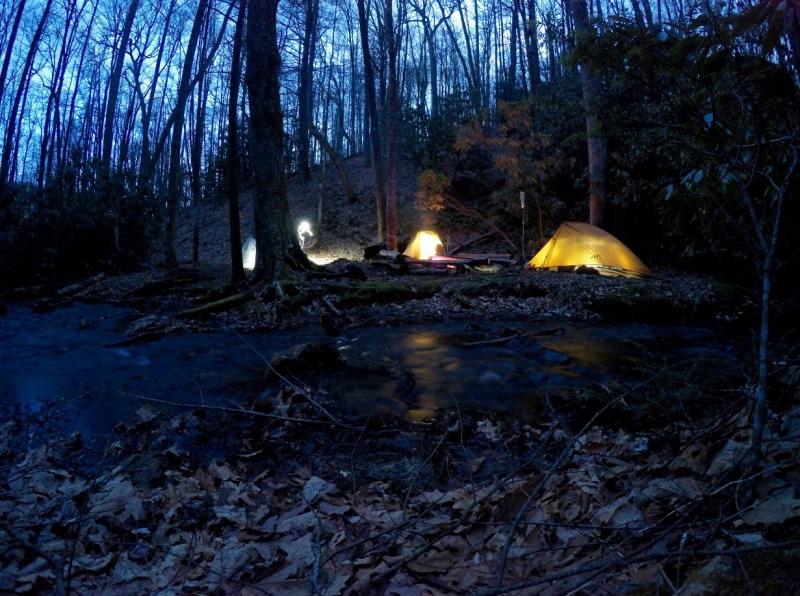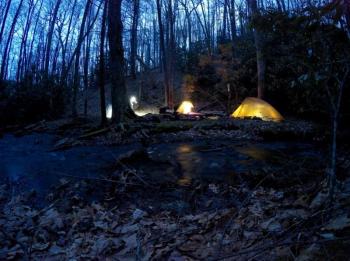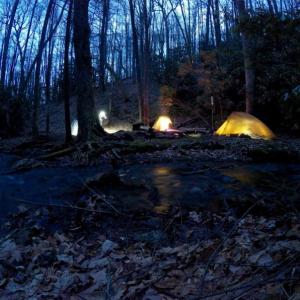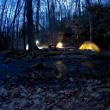The Bergers’ life on the trail: Part 2
By the time Steve and Karl Berger had reached Abingdon Gap, their clothes were soaked. They had just trudged 17 miles through the pouring rain. If they pushed on, they could make it to Damascus, Virginia, but they would probably not get there until long after nightfall.
Karl stopped and removed his mud-spattered gaiters. It was springtime in Tennessee, yet when he exhaled, he could see his breath. His father, Steve arrived shortly after.
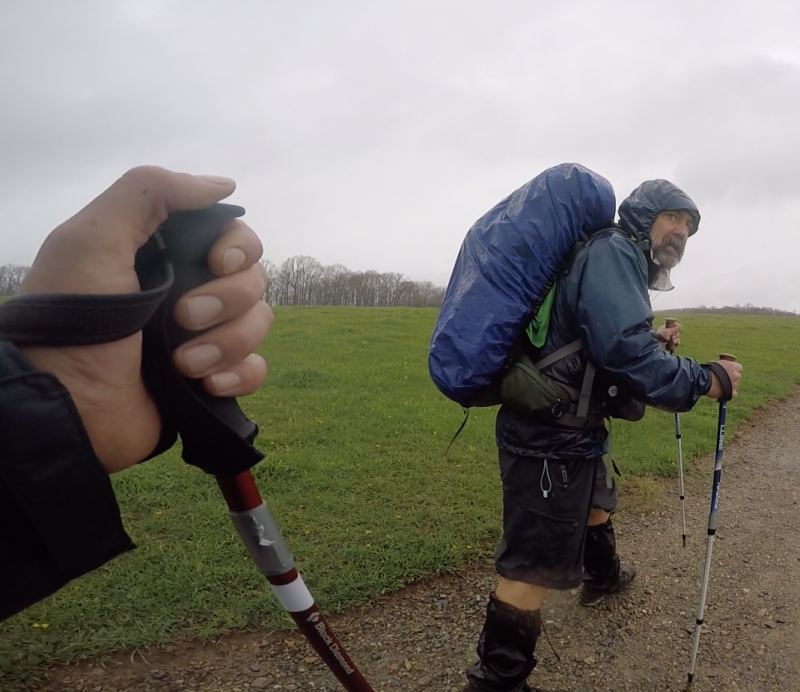
“This is what we signed up for,” Steve said. His forehead dripped with sweat underneath his hood. The Bergers were wet and tired and in no mood to hike 10 more miserable miles in the dark. They decided to spend the night on the mountainside, hunkered down in a shabby shelter.
That night the clouds swirled overhead and the wind howled. The raindrops sounded like they were denting the shelter roof. Throughout the night, gunky rainwater leaked on Karl’s head. In the morning they donned their damp hiking clothes and continued on to Damascus.
Just another day on the Appalachian Trail.
By the time you read this, the Bergers will have hiked 500 miles. Nearly a quarter of the trail is behind them, and now the father and son team must press on for another 500 miles through Virginia’s vast mountain chains before crossing the next state border. It’s the longest stretch of their journey.
Thru-hikers like Steve and Karl typically refer to this part of the trail as the “Virginia Blues.” It’s because once they reach this point, the honeymoon period is over. All one can do is hike on. Through the endless miles of woods and hills, through the hot, blistering sunny days, and the cold, damp rainy nights. This is the part of the trail when nearly 50 percent of thru-hikers drop out, according to statistics reported by the Appalachian Trail Conservancy.
But the idea of dropping out hasn’t occurred yet to Steve and Karl, or should I say “Walking Man” and “GQ.”
Those are the names Steve and Karl go by on the trail.
Before the hike started, Steve said he chose the trail name “Walking Man” because it’s straightforward. He said when he signs his signature, the “W” forms a shape like waves, and the “M” makes the mountains he walks over.
Karl didn’t choose his trail name. Like most thru-hikers, he earned it. Karl started being called GQ when other hikers noticed how well he maintained his “good looks and cleanliness” on the trail. It’s as if he hiked straight out of the pages of Gentleman’s Quarterly, said one hiker called “Fruit Smoothie.”
Fruit Smoothie, whose real name is Tia, got her name because it’s all she craved during her first days on the trail.
But not all trail names are flattering.
Just ask “Pumpkin Butt.”
As siblings will do, Fruit Smoothie decided her brother, Jackson, should be called Pumpkin Butt — not for any logical reason though — and so the name stuck. Call it a manifestation of one’s ego or simply hikers having fun; trail names have remained popular on the AT.
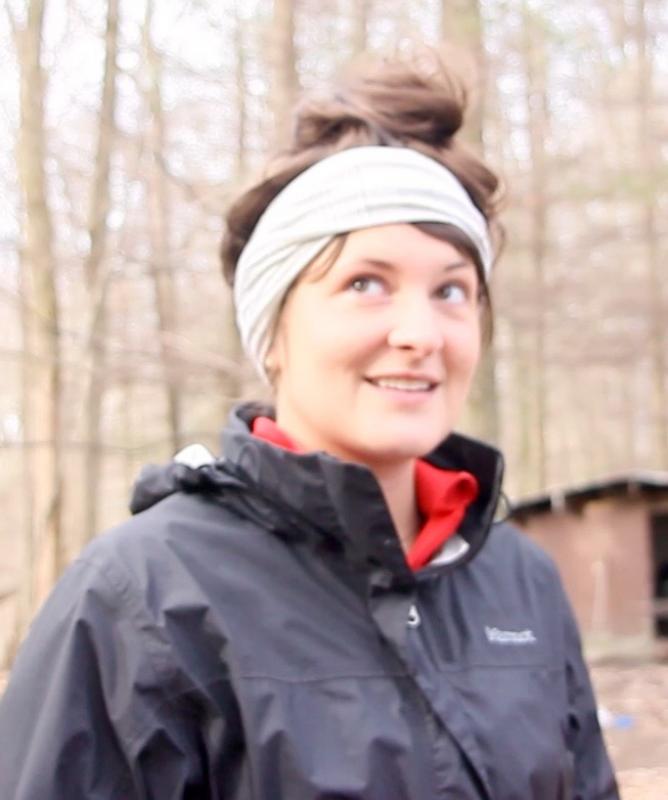
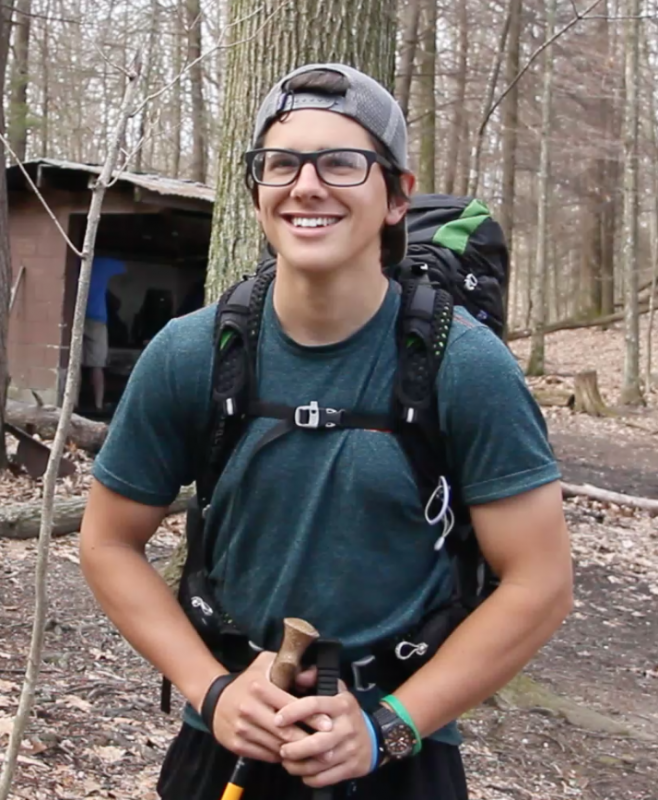
Hikers often walk together on the AT in what is described as social bubbles. Some days they hike separately. Other days they hike in packs. They meet up in the shelters, hostels and towns along the trails, and while there is plenty of compassion and empathy for fellow hikers, there is also a popular phrase: “Hike your own hike.” It means not to worry about what others think, and to pursue your own adventure.
At their current pace, the Bergers are hiking 15-20 miles every day at 3 to 4 miles per hour, and they’re doing it with relative ease. For anyone who has racked up laps around the YMCA track, 15 miles might not seem like a long distance. (Or maybe it does.)
Try hiking every day, up and down mud-smeared mountains with 40-pounds on your back, and one will soon discover 15 miles is a long, long slog, especially without a shower.
Despite the muscle aches, the blisters, the chaffing and the constant sores, the AT is bursting with beauty.
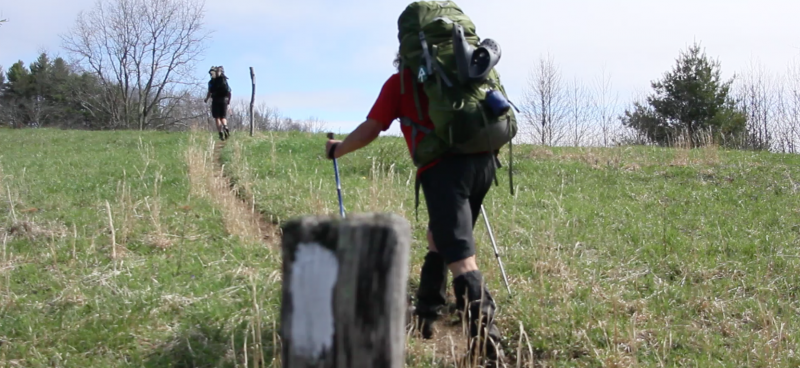
Spring has arrived in the lowlands of northern Tennessee. The dogwoods and cherry trees are in full bloom, and the woods are very much alive across Virginia’s Shenandoah Valley.
There’s a deep cultural heritage in Appalachia, too. More than 230 years ago, the Overmountain Men settled those parts. They were known as a dedicated bunch, strongly independent and unwilling to comply with the order of the Crown.
Nowadays, the local folk are generally tamer, and they still cherish their local freedoms. Southern hospitality is as real a thing as the Bible belt. Everyday greetings come with God’s blessings.
Thru-hikers are generally good natured, free-spirited people. They are tough and can endure whatever nature throws in their path. While there exists a younger faction of partiers and pot smokers on the trail, most hikers like Walking Man and GQ respect each other and the grand Appalachian landscape.
The Bergers are carrying on with their grand adventure, hiking their own hike, and enjoying the time together as father and son. Every 6 to 10 days they take half a day’s rest to recuperate and resupply. At that pace they will probably reach Maine by mid-August, just in time to catch the tail-end of a Boothbay Harbor summer.

Event Date
Address
United States

